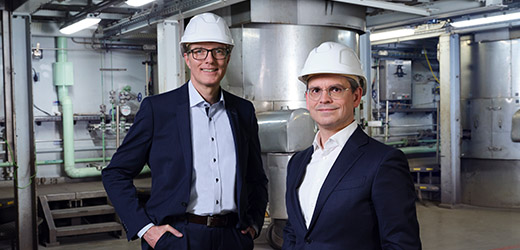Economic and Legal Factors
WACKER sells its products and services to virtually every industry. Although our business divisions are not immune to economic fluctuations, their onset and impact may vary. Our product portfolio and broad customer base enable us to mitigate the magnitude of such fluctuations.
Orders
The terms for orders placed with WACKER vary from division to division. Most orders received by WACKER SILICONES are short term, though a small number are long term. At WACKER POLYMERS, business is based on contracts and framework agreements with terms of up to one year in some cases. At WACKER POLYSILICON, we conclude short- and long-term contracts. A proportion of incoming orders are short-term ones, with prices based on market benchmarks. Due to varying order-placement procedures at the Group, order-level reporting is not very meaningful and hence does not serve as an indicator in our monthly reports.
Operational Metrics as Leading Indicators of Future Developments
By referring to specific leading indicators based on operational metrics, we try to factor potential developments into our business plans and to allocate capacities accordingly. Since our operations are based on diverse businesses and markets, we use a number of leading indicators to gain insights into potential developments at each of our business divisions. Indicators include trends in raw-material and energy prices, as well as data from our own market research and discussions with customers.
Economic Factors Impacting Our Business
The main economic factors influencing WACKER’s business remained unchanged in many areas.
Raw-Material and Energy Costs
As a chemical company, we belong to an energy-intensive industry and require diverse raw materials to manufacture our products. Consequently, increases in raw-material and energy costs have a significant effect on our cost structure. WACKER strives to keep costs at a competitive level. It does so by using multiple suppliers for most of its key raw materials and structuring its supply contracts so as to grant it the greatest possible flexibility as regards volumes, and by monitoring commodity price indexes to ensure competitive procurement prices. We try to pass on higher raw-material costs to our customers, for the most part by adjusting our selling prices. Amendments to the regulatory framework – such as to grid charges, to energy and electricity taxes, to CO2 certificates in the European Emissions Trading Scheme (ETS) and to the German Renewable Energy Act (EEG) – can have both direct and indirect negative effects on WACKER’s energy costs. On the one hand, the EEG surcharge was not relevant in 2022, because the EEG costs were paid by the German government. On the other hand, electricity and natural gas prices paid at European industrial sites increased more quickly than in other regions, due to Russia’s attack on Ukraine. The politically induced supply shortage on the European electricity market – shutting down conventional capacities while at the same time not providing for sufficient additional renewable capacities – also affected electricity prices. That is why WACKER advocates the introduction of an industrial electricity price or, alternatively, a green transformation electricity price at internationally competitive terms, and is lobbying policymakers to achieve its aim.
Exchange-Rate Fluctuations
As a rule, WACKER hedges against exchange-rate fluctuations. We hedge about half of our dollar exposure for the following year with a mix of currency-hedging transactions. In determining sensitivity, we simulate a 10-percent devaluation of the US dollar against the euro. Without hedging, such an increase in the euro against the US dollar would have a negative impact on EBITDA of around €75 million. In 2022, we also concluded hedging transactions in Japanese yen (JPY).
State-Regulated Incentive and Feed-In Tariff Programs for Renewable Energy Sources
As one of the world’s leading suppliers of hyperpure polycrystalline silicon, we are affected by regulatory changes to incentive and feed-in tariff programs for renewable energy sources. Substantially lower prices for solar modules and cells have greatly increased the competitive advantage of solar energy over fossil fuels and other methods of power generation. The cost of manufacturing photovoltaic products is expected to continue decreasing, which will further reduce dependence on state-regulated incentive and feed-in tariff programs over the next few years. Our assumption is that, in a few years, solar energy will do well even without special incentives, particularly in combination with cost-efficient storage options.

